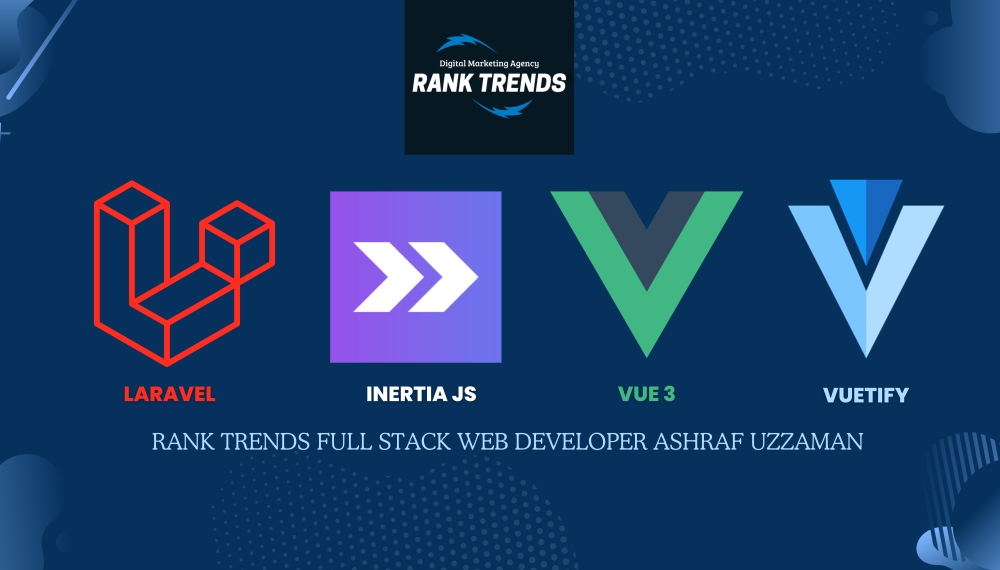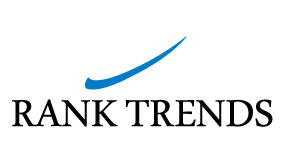
Building a Strong Corporate Identity
In today’s fast-paced business world, having a strong corporate identity is crucial for businesses of all sizes. Corporate identity includes all the visual elements that represent a company, from logos and business cards to websites and social media profiles. Building a cohesive and professional identity is not just about looking good; it’s about creating a brand that is recognizable, trustworthy, and appealing to customers.
In-house graphic design plays a key role in creating and maintaining this corporate identity. By having a dedicated design team, companies can ensure consistency, streamline the design process, and respond quickly to changes and opportunities. This article explores the various aspects of corporate identity and how in-house graphic design can effectively manage and enhance it.
What is Corporate Identity?
Corporate identity is the overall image of a business in the minds of its stakeholders. It includes visual elements like logos, color schemes, fonts, and design styles that create a distinct look and feel for the company. A strong corporate identity helps differentiate a company from its competitors and establishes a unique presence in the market.
Key Elements of Corporate Identity
Logo Design
Color Scheme
Typography
Imagery and Graphics
White Space
Imagery and Graphics
Robust Technology
Why Choose Rank Trends Web Development Service?
In this day where establishing a strong online presence is paramount, selecting the right web development service can significantly impact the success of your online business. At Rank Trends, we have earned the trust of our customers who opt for our web development solutions for several compelling reasons.
Now the question is why customers choose us for their web development needs!!
Professional Web Developers
Our team possesses expertise in the latest web technologies and best practices, continually upgrading their skills to keep your website cutting-edge. With extensive industry experience, our developers adeptly tackle diverse challenges, and we specialize in crafting custom solutions that cater to your unique needs, whether it’s an e-commerce platform, a content management system, or a custom application, bringing your vision to life.
Custom Web Development Service
Our custom web development services ensure that your site reflects your brand identity, leaving a strong impression on your audience. Tailored for enhanced user experience, our user-friendly interface meets the needs of your target audience, resulting in a more engaging user experience. Additionally, our solutions are designed with scalability in mind, allowing your website to adapt seamlessly as your business grows and evolves.
Web Security
Customers choose Rank Trends for our steadfast commitment to web security in a digital field where cybersecurity is paramount. Our comprehensive protection, featuring a multi-layered approach, shields your website from potential threats and cyberattacks, reinforcing your online presence and safeguarding sensitive data. Proactively, we conduct routine security audits to promptly identify and rectify vulnerabilities, with a strong emphasis on data protection and privacy compliance for the security of your customers’ information.
Clean Code
Customers prefer us for our dedication to clean code, and here’s why it matters: Clean and organized code ensures the smooth functioning of your website, enhancing its speed, performance, and user experience, ultimately boosting your site’s search engine ranking. Furthermore, well-structured code simplifies future maintenance and updates, guaranteeing that your site remains agile and adaptable to changing requirements. it enhances the performance of your website, resulting in an improved user experience, higher search engine rankings, and long-term adaptability.

Our Tech Success Stories
Let our track record do the talking. With over 100+ satisfied clients worldwide and an impressive 95+ glowing reviews, our web development services have become synonymous with success. Many of our previous clients have witnessed astonishing results, including a phenomenal 250% business growth. Their stories of flourishing businesses, heightened online visibility, increased sales, and reinforced brand recognition are living proof of the transformative impact of our web development expertise.
Premium quality
support
Cost effective
service
Building a Cohesive Corporate Identity with In-House Design
Brand guidelines are essential for maintaining a consistent corporate identity. These guidelines should cover all visual elements, including logo usage, color schemes, typography, imagery, and layout principles. By establishing clear rules, in-house designers can ensure that all materials produced align with the brand’s identity.
Logo Design
The in-house design team should create a logo that is simple, memorable, and reflects the company’s values and industry. The logo should work well in various sizes and formats.
Business Cards
Business cards often make the first impression of the company. A well-designed business card should be professional and align with the company’s brand identity. Include essential information such as the company logo, contact details, and the individual’s name and position.
Stationery
Corporate stationery, including letterheads, envelopes, and notepads, should consistently reflect the brand’s identity. This enhances professionalism and strengthens brand recognition.
Website Design
The company’s website is a vital part of its corporate identity. It should be visually appealing, user-friendly, and consistent with the brand’s style. The website design should also be responsive, ensuring a seamless experience across all devices.
Social Media Profiles
Social media is a powerful tool for brand engagement. The design of social media profiles, including cover photos, profile pictures, and post graphics, should be consistent with the company’s overall brand identity.
Marketing Materials
Brochures, flyers, posters, and other marketing materials should follow the brand guidelines to ensure consistency. These materials should effectively communicate the company’s message and values.
Packaging Design
For companies that sell physical products, packaging design is crucial. It should protect the product, provide information, and be visually appealing. Consistent packaging design helps in building brand recognition.
Official Printing Elements
Official Printing Elements: High-quality printing materials such as annual reports, corporate brochures, and catalogs are essential. These printed materials should reflect the company’s identity through consistent use of logos, colors, fonts, and overall design. They should be designed to leave a lasting impression on clients and stakeholders.
Best Web Development Agency: Masters of the Digital World
In today’s high-tech world, it’s crucial for any business to have a strong online presence. Your website acts as a virtual front door for your customers, so it must be attractive and user-friendly. This is where the best web development agency comes into play. We’ll explore what makes Rank Trends as a web development agency the best and find out what we’re good at.
Rank Trends has some special qualities that make it stand out. Here are some things that make us the best:
Why In-House Graphic Design?
In-house graphic design provides businesses with several key benefits, such as consistent brand imagery, streamlined collaboration, and cost savings. By employing a dedicated design team, companies can ensure that all creative work aligns with their brand’s vision and values. These designers, deeply familiar with the brand’s identity and culture, can swiftly respond to market shifts and immediate design requirements, making them essential for developing a strong and cohesive corporate identity.
Having an in-house graphic design team offers several advantages:
Consistency: An in-house team ensures that all design work adheres to the company’s brand guidelines, maintaining a consistent look across all materials.
Efficiency: In-house designers can work closely with other departments, allowing for quicker turnaround times and better collaboration.
Control: Companies have greater control over the design process, from initial concepts to final execution, ensuring that all designs align with the brand’s vision.
Cost-Effective: While hiring external agencies can be expensive, having an in-house team can be more cost-effective in the long run, especially for businesses with ongoing design needs.
Ensuring Consistency
Regular Audits: Conduct regular audits of all visual materials to ensure they adhere to the brand guidelines. This helps in identifying any inconsistencies and making necessary adjustments.
Training and Collaboration: Provide training for all employees on the importance of brand consistency. Encourage collaboration between the in-house design team and other departments to ensure that everyone is on the same page.
Feedback and Improvement: Continuously seek feedback from stakeholders and customers to identify areas for improvement. Use this feedback to refine and enhance the corporate identity.
The Future of Corporate Identity and In-House Design
As technology and design trends evolve, companies must stay updated to maintain a relevant and appealing corporate identity. In-house design teams should be encouraged to explore new tools, techniques, and trends to keep the brand fresh and innovative. By fostering a culture of creativity and continuous improvement, businesses can ensure that their corporate identity remains strong and effective in the ever-changing market landscape.
As we move forward, the landscape of corporate identity and in-house design is set to evolve in exciting ways. Here are some key trends and strategies that will shape the future:
1. Leveraging Advanced Technologies
- AI and Automation: The integration of AI in design processes can boost creativity and streamline tasks, allowing designers to focus on high-level, strategic work.
- AR and VR: Augmented and virtual reality can offer immersive brand experiences, making promotional materials more engaging and interactive.
2. Adapting to Design Trends
- Simplicity and Minimalism: Clean, straightforward designs will continue to dominate, emphasizing clarity and user-friendliness.
- Vibrant Typography and Colors: Utilizing bold fonts and striking colors can help brands stand out in a competitive market.
3. Enhancing User Experience (UX)
- Responsive Design: Ensuring that designs are adaptable across various devices is critical as mobile internet usage continues to grow.
- Personalized Experiences: Customizing designs to meet individual user preferences can significantly boost engagement and user satisfaction.
4. Fostering Innovation and Creativity
- Ongoing Education: Encouraging continuous learning and skill development keeps in-house designers at the forefront of innovation.
- Design Thinking: Applying design thinking methodologies can help solve complex problems and create more user-centric designs.
5. Maintaining Brand Consistency
- Comprehensive Brand Guidelines: Developing detailed brand guidelines ensures consistency across all visual elements and communication channels.
- Regular Design Audits: Periodically reviewing all design assets helps maintain brand coherence and identify areas for improvement.
6. Promoting Effective Collaboration
- Collaborative Design Tools: Utilizing tools that support teamwork and real-time feedback can enhance the efficiency and quality of the design process.
- Interdepartmental Cooperation: Close collaboration between design and other departments ensures alignment with overall business objectives.
7. Prioritizing Sustainability
- Eco-Friendly Practices: Implementing sustainable design practices, such as using recyclable materials and minimizing waste, can enhance brand reputation and appeal to eco-conscious consumers.
8. Using Data and Analytics
- Data-Driven Design: Leveraging user data to inform design decisions can make them more effective and targeted.
- A/B Testing: Regularly testing different design elements helps determine what resonates best with the audience.
9. Embracing Flexibility and Customization
- Adaptive Branding: Creating flexible brand assets that can be easily adjusted for different contexts and mediums ensures that the brand remains relevant.
- Modular Design Systems: Developing modular design systems allows for easy updates and modifications without compromising brand integrity.
10. Emphasizing Ethical Design
- Inclusivity: Designing with inclusivity in mind ensures that all users, regardless of their background or abilities, can interact with the brand effectively.
- Transparency: Being open and honest in design practices fosters trust and strengthens customer loyalty.
By focusing on these strategies, businesses can ensure their corporate identity remains strong, relevant, and effective. In-house design teams, armed with the latest tools and a forward-thinking approach, can lead the way in creating innovative and impactful brand experiences that resonate in an ever-changing market landscape.
Conclusion
A strong corporate identity is essential for businesses looking to establish a recognizable and trustworthy brand. In-house graphic design plays a crucial role in creating and maintaining this identity, ensuring consistency, efficiency, and control over the design process. By developing comprehensive brand guidelines, designing key corporate materials, and fostering collaboration and continuous improvement, businesses can build a cohesive and powerful corporate identity that stands out in the competitive market.
F-A-Q
Back-End Web Development or Web Application Development related questions:
What is corporate identity?
Corporate identity refers to the visual and conceptual representation of a company’s brand, including its logo, color palette, typography, imagery, and overall design style. It encompasses the visual elements that communicate the company’s values, personality, and essence to its stakeholders.
Why is corporate identity important for businesses?
Corporate identity is essential for businesses as it helps create a cohesive and recognizable brand image, build trust and credibility with customers, differentiate the company from competitors, and foster a sense of unity and pride among employees.
What components make up corporate identity?
Corporate identity comprises various components including the company logo, color scheme, typography, imagery, brand messaging, tone of voice, packaging design, stationery, website design, social media presence, and other visual and textual elements that represent the brand.
How does corporate identity differ from branding?
While corporate identity focuses on the visual and design aspects of a brand, branding encompasses a broader spectrum of activities aimed at shaping and managing the overall perception of the brand in the minds of consumers. Corporate identity is a subset of branding, focusing specifically on the visual representation of the brand.
How can I develop a strong corporate identity for my business?
Developing a strong corporate identity involves defining your brand’s values, mission, and personality, conducting market research to understand your target audience, creating a memorable and timeless logo, establishing brand guidelines to maintain consistency, and applying your brand identity across all touchpoints consistently.
What are the benefits of having a cohesive corporate identity?
A cohesive corporate identity helps in building brand recognition and recall, fostering customer loyalty and trust, creating a professional and credible image, differentiating the brand from competitors, attracting and retaining top talent, and facilitating brand expansion into new markets.
How can I ensure consistency in my corporate identity across different channels?
To ensure consistency, it’s essential to develop comprehensive brand guidelines that outline rules for logo usage, color palette, typography, imagery, and other visual elements. Regularly audit all brand materials to ensure they align with the guidelines, and provide training for employees to educate them on the importance of brand consistency.
What role does corporate identity play in internal branding and employee engagement?
Corporate identity plays a crucial role in internal branding by aligning employees with the company’s values, mission, and culture. A strong corporate identity fosters a sense of belonging and pride among employees, enhances teamwork and collaboration, and inspires a shared commitment to the company’s success.
Can corporate identity evolve over time, or should it remain consistent?
While it’s essential to maintain consistency in core brand elements, corporate identity can evolve over time to stay relevant and adapt to changing market trends, consumer preferences, and business goals. However, any changes should be carefully considered to ensure they align with the brand’s essence and values.
How can I measure the effectiveness of my corporate identity?
Measuring the effectiveness of corporate identity involves tracking metrics such as brand awareness, brand perception, customer loyalty, employee engagement, and market share. Conducting surveys, analyzing social media sentiment, and monitoring brand mentions can help assess the impact of your corporate identity efforts.


